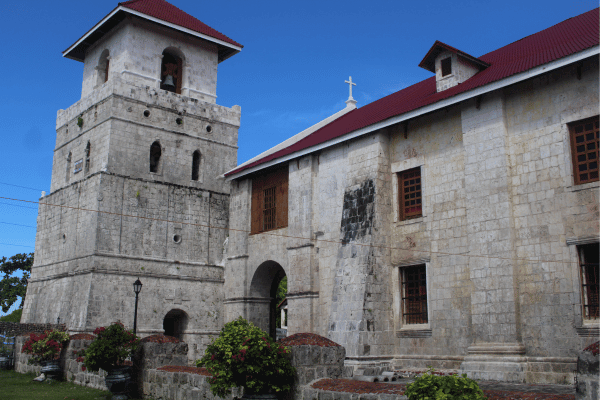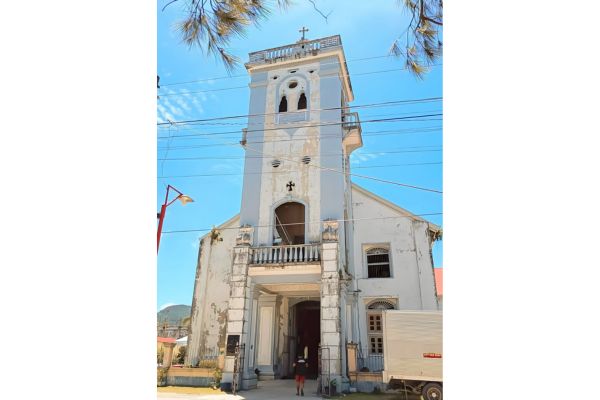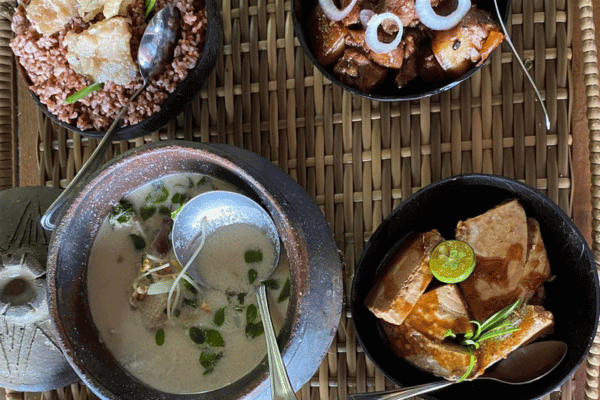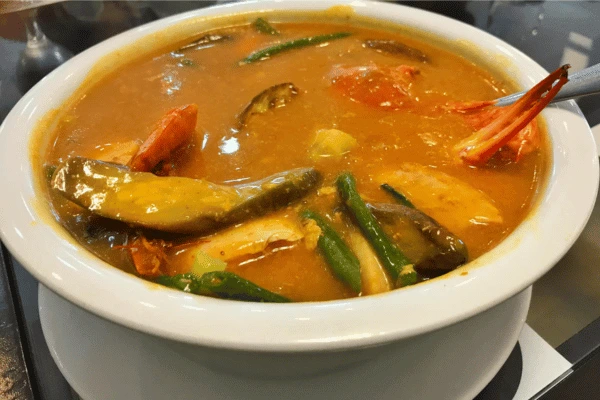Cultural Experience in Bohol
Bohol, a captivating island province in the Philippines, stands as a prime destination for travelers seeking a rich tapestry of cultural heritage and attractions. Far beyond its famous Chocolate Hills and the endearing tarsiers, Bohol invites visitors to delve into an immersive cultural journey. With its unique blend of history, traditions, and natural wonders, the Island of Bohol provides an unparalleled travel experience for those eager to explore the depths of Filipino culture.
From the bustling streets of Tagbilaran City to the serene flow of the Loboc River, every corner of this island echoes stories of the past and present. The Boholano people, known for their warmth and hospitality, play a crucial role in making Bohol’s cultural experience truly memorable. As we explore Bohol, we witness a province that beautifully balances its rich history with the vibrancy of modern Filipino life.
| Historical Site/Event | Description |
|---|---|
| Blood Compact Site | A historical landmark commemorating the first treaty of friendship between Datu Sikatuna, a native chieftain, and Miguel López de Legazpi, a Spanish explorer. |
| Baclayon Church | One of the oldest and most preserved Jesuit-built churches in the region, showcasing Spanish colonial architecture and religious art. |
| Sandugo Festival | An annual cultural and historical celebration in Bohol, marking the Blood Compact with vibrant parades, traditional dances, and re-enactments. |
| Nuestra Señora de la Luz Parish in Loon | A significant religious site reflecting centuries of Catholic influence, known for its spiritual traditions and architectural beauty. |
| Tagbilaran City Fiesta | A lively celebration in honor of Saint Joseph, the patron saint of Tagbilaran City, featuring cultural shows, religious activities, and feasts. |
| Loboc River Festival | An event celebrating the scenic and cultural beauty of the Loboc River, including river parades, cultural performances, and local cuisine. |
| Baclayon Town Fiesta | A festive event in Baclayon, honoring the Immaculate Conception with religious ceremonies, cultural shows, and community feasts. |
Historical Roots of Bohol
The history of Bohol is as fascinating as its landscapes. Central to this history is the famous Blood Compact, an event that symbolizes the island’s rich past. This historic pact between Datu Sikatuna, a native chieftain, and Miguel López de Legazpi, a Spanish explorer, marked one of the first international treaties of friendship. Commemorated by the Sandugo Festival, this event illustrates the intricate layers of Bohol’s history, blending native traditions with foreign influences.
Bohol’s narrative is further enriched by its Spanish colonial era legacy. Structures like the centuries-old Baclayon Church and other heritage churches stand as testaments to the province’s colonial past. These architectural marvels not only showcase exquisite Spanish colonial architecture but also narrate stories of faith, resilience, and community. As we wander through towns like Loon and Baclayon, each heritage site unfolds chapters of Bohol’s intriguing history.

Boholano Traditions and Community Life
The soul of Bohol lies in its people and their way of life. The Boholano community in barangays like Bilar and Loay is a tapestry of traditional family structures and values that have been preserved over generations. In Boholano families, respect for elders and strong familial ties form the backbone of society. These values are evident in daily interactions, where communal support and a sense of belonging thrive.
Unique Boholano customs reflect a culture deeply rooted in respect, harmony, and resilience. One such tradition is the art of “bayanihan,” where community members come together to help one another, a practice that has remained relevant even in modern times. This spirit of cooperation and mutual aid is a cornerstone of Boholano culture, symbolizing their strong community bonds.
As we move through the municipalities, each barangay showcases its own set of traditions and practices, adding to the rich cultural mosaic of Bohol. From traditional music and dance to the art of weaving, these customs are not just relics of the past but are vibrant parts of everyday life.
Culinary Journey through Bohol
No cultural experience in Bohol is complete without exploring the local cuisine, and the province offers a culinary journey that tantalizes the taste buds and provides insight into its heritage. Boholano cuisine is a delightful blend of flavors, with dishes that are as diverse as the island’s history.
- Bohol Bee Farm: Renowned for its organic and healthy food options, Bohol Bee Farm offers a unique dining experience. Their menu features traditional Boholano dishes made with fresh, locally-sourced ingredients, including their famous homemade ice cream with unique flavors like malunggay and spicy ginger.

- The Mist: Located in the lush surroundings of Loboc, The Mist serves up a variety of Boholano specialties. This restaurant is known for its beautiful setting and serves dishes that are both traditional and infused with modern culinary twists.
- Gerarda’s Family Restaurant: A popular dining spot in Tagbilaran City, Gerarda’s offers a warm and cozy ambiance. Their menu includes classic Boholano dishes, giving visitors a taste of authentic local flavors.

- Tarsier Paprika: Overlooking the ocean, Tarsier Paprika provides a serene dining experience. They specialize in Boholano cuisine with a gourmet edge, making it a perfect spot for those looking to savor traditional dishes in a more upscale setting.
- Payag Restaurant: Payag, which means ‘nipa hut’ in Visayan, offers an authentic Boholano dining experience. Known for its rustic and traditional ambiance, this restaurant serves a variety of local dishes that capture the essence of Bohol’s culinary culture.
- Loboc Riverwatch Floating Resto: For a unique dining experience, the floating restaurants along the Loboc River offer a scenic view and a taste of local cuisine. Guests can enjoy traditional Boholano food while cruising along the picturesque river.
Each of these restaurants provides not just a meal, but an immersive cultural experience, offering a taste of Bohol’s rich history and traditions through their culinary creations. Visitors to Bohol are encouraged to explore these dining venues for a comprehensive culinary journey that complements their travel experience on this captivating island.
Architectural and Artistic Wonders of Bohol
Bohol is not only a feast for the palate but also a haven for the eyes, particularly for those interested in architecture and art. The island’s heritage churches, especially the Baclayon Church, one of the oldest churches in the Philippines, are architectural marvels that tell tales of faith and history. These churches, built during the Spanish colonial period, blend religious symbolism with architectural ingenuity, creating serene spaces that have stood the test of time.
Beyond these magnificent structures, Bohol’s artistic landscape is equally rich. Traditional arts and crafts, such as the intricate “Nito” weaving and “Tarsier” woodcarvings, showcase the creativity and skill of Boholano artisans. These crafts are more than mere souvenirs, they are tangible pieces of Bohol’s cultural identity, each telling a story of the island’s heritage and the ingenuity of its people.
Festivals and Cultural Celebrations
Bohol’s cultural tapestry shines brightest during its festivals and cultural celebrations. These events are vibrant displays of the island’s history, traditions, and community spirit.

- Sandugo Festival: This annual celebration marks the historic blood compact between Datu Sikatuna and Miguel López de Legazpi. It’s a colorful extravaganza of dances, music, and re-enactments, showcasing the harmonious blend of Bohol’s history and its present-day vibrancy.
- Tagbilaran City Fiesta: Celebrated in honor of Saint Joseph, the patron saint of Tagbilaran City, this fiesta is a lively event featuring cultural shows, religious activities, and community feasts. It’s a time when the city comes alive with a spirit of joy and togetherness, reflecting the vibrant culture of Bohol.
- Loboc River Festival: This festival celebrates the scenic and cultural beauty of the Loboc River. Including river parades, cultural performances, and showcasing of local cuisine, it’s an event that highlights the natural beauty and artistic talents of the Boholano people.
- Baclayon Town Fiesta: Held in honor of the Immaculate Conception, the town fiesta in Baclayon is a festive event that combines religious ceremonies with cultural shows and community feasts. It’s a testament to the deep spiritual and communal bonds that exist within Boholano society.
Festivals like these are not just entertainment, they are living, breathing embodiments of Bohol’s culture. They preserve the heritage and traditions that define the island, ensuring that they are passed on to future generations. The enthusiasm and participation of the Boholano people in these festivals speak volumes about their pride in their heritage and their commitment to keeping their traditions alive.
Spiritual Traditions in Bohol
The spiritual life in Bohol is a significant aspect of its cultural identity. Deeply rooted in Catholicism, the province’s religious practices are a fusion of centuries-old traditions and modern beliefs. Churches, like the Nuestra Señora de la Luz Parish in Loon and Baclayon Church, are not only architectural wonders but also centers of spiritual life. These churches play a pivotal role in the daily lives of Boholanos, hosting numerous religious festivals and events that are integral to the community’s cultural fabric.
Bohol’s spiritual traditions extend beyond the walls of churches. Religious practices are interwoven with daily life, influencing everything from family values to community celebrations. This deep spiritual connection is evident in the respect and reverence Boholanos have for their religious traditions, making spirituality a cornerstone of Boholano culture.

Modern Cultural Landscape of Bohol
As we venture into the modern cultural landscape of Bohol, we witness a dynamic interplay of tradition and modernity. Contemporary cultural developments, such as local art exhibitions, music festivals, and theater performances, are becoming increasingly popular, showcasing the evolving nature of Boholano culture. Educational initiatives by the Provincial Government and the National Commission for Culture and the Arts play a crucial role in preserving Bohol’s cultural heritage while embracing new artistic expressions.
This modern cultural scene is a testament to Bohol’s adaptability and resilience. While deeply rooted in their traditions, Boholanos are also embracing change, creating a vibrant and diverse cultural environment that is both respectful of the past and open to the future. You may want visit the many tourist spots to see this.
Tourism’s Role in Cultural Preservation
Tourism has a significant impact on the preservation and promotion of Bohol’s culture and heritage. As visitors flock to the island to experience its natural wonders and rich history, there is a growing awareness and appreciation for Bohol’s cultural assets. This interest has led to increased efforts to protect and preserve the island’s cultural sites, ensuring that they remain intact for future generations.
Promoting sustainable tourism is key to protecting Bohol’s cultural heritage. Initiatives that encourage responsible travel and support local communities help maintain the integrity of Bohol’s cultural sites while providing economic benefits to the local population. This approach ensures that tourism contributes positively to the preservation of Bohol’s unique cultural identity.
Final Thoughts
Bohol’s cultural experience is a tapestry of history, traditions, spirituality, and modernity, offering a window into the rich heritage of the Filipino people. As we encourage a deeper understanding and appreciation of Bohol’s culture, we invite travelers to not just visit but to immerse themselves in the island’s captivating story. Whether it’s through exploring its historical sites, participating in local festivals, or simply interacting with the warm and welcoming Boholanos, a trip to Bohol promises an unforgettable cultural journey. And if you’re looking for other things to do in Bohol, please click here.

